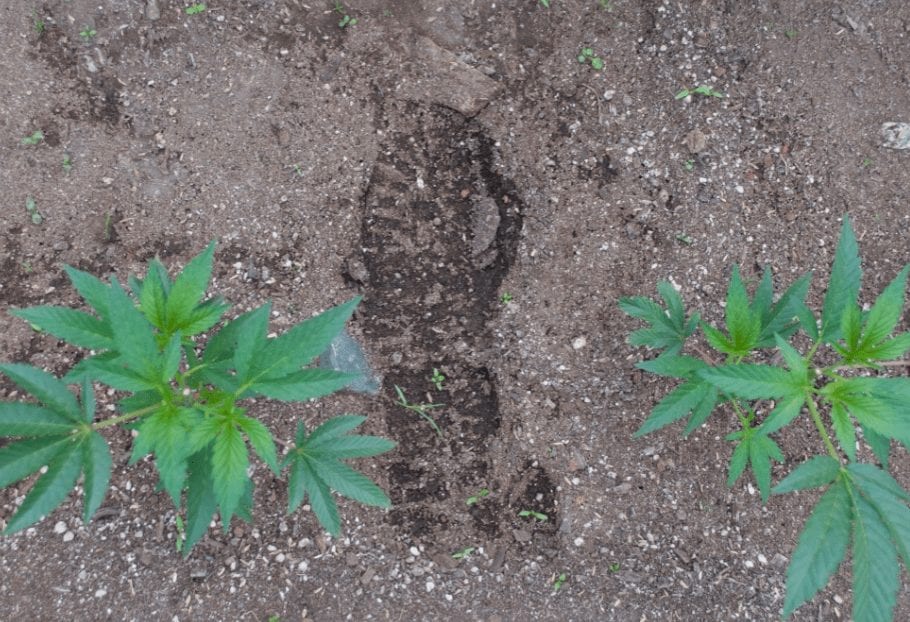
Exploring the Ancient Strains that Flourish Today – Kilimanjaro Cherry
“One hit and the strain’s ancient origins come into evidence. When Cleopatra was seducing Caesar, when Harriet Tubman was navigating ex-slaves through the underground railroad, when my forebears were stressing their Ellis Island entrance, someone, somewhere was enjoying these flowers.”

During prohibition, our farm grew mostly one strain for the past 16 years — OG. As per black market demands, we suffered through the occasional weird bud structure and a propensity to powdery mildew that are the hallmark of the desirable “fuel” strains.
Late in the spring one of our workers from Redding showed up with some clones he found to bolster our crop, called Kilimanjaro Cherry. At first, we were hesitant to deviate from our formula for success, but we had extra room to fill. My imagination was immediately sparked, picturing myself smoking a dube in the equatorial snows with highland tribesmen.
From the jump, these ladies looked way taller than their cousins. As the grass grew, so did the legal climate of cannabis. By the time they were chin high, they were starting to look startling, and it was starting to look like cannabis might finally be legal. So, I was finally free to explore these freak strains that aren’t mentioned in rap songs.
A google search told me that my Kilimanjaro Cherry was something special. Landrace strains are the oldest, purest wild strains that have adapted over thousands of years to flourish in the specific climates that they originated from.
Flower size, timing, leaf color and even potency can stem from adaptations the plants made on their own to excel in their specific environment. The cradle of cannabis happens to be Central Asia (2900 BC is when scientists estimate that cannabis began to be cultivated for food, fiber, medicine and religion), but it was slowly spread throughout Asia, Africa, Europe, the Middle East and Russia. My crazy clones with the exotic name were what Jesus smoked!
Heirloom strains are the result of the cultivation and crossbreeding, especially in the “New World” by humans, and are the basis of all those OGs that SoCal can’t get enough of. I began to look at these ancient genetics differently.
The wild irises that spring up around the ranch gained new significance. They are definitely skinnier than their more civilized cousins, but they can be healthy, abundant and beautiful. So was my Kilimanjaro Cherry; they were fecund and feminine, towering over everyone in the garden. Queens of the greenhouse, they clustered in their corner demanding accolades. As they lengthened, brilliant magenta streaks ran up and down their thick bows and stems. The web warned me about a potentially smaller yield.
In September, magenta turned to maroon and purple with the cold. They put on a lot of weight, swelled, and turned solid. I pictured my gorgeous pink girls planted between the coffee beans on a Tanzanian coffee plantation, amongst gazelles and monkeys. Oh, the terpenes! As the sun warmed their leaves at dawn, they off gassed the most intoxicating terpene aroma of cherry blossoms and oak. They always retained their darkest heart of Africa appeal, though, with spiky leaves and hearty stems.
Since we didn’t have enough room to dry all the maidens, some had to be made into oil and Kilimanjaro Cherry was the perfect candidate. There seemed to be giant nuggets and teeny bong-hit sized nugs in between. So, we cut and cured the top third, giving ourselves just a few outstanding pounds, all the better to compete in the new dispensary market. After all, in this brave new world, we wanted to put our best selves forward. The remaining leaves and lesser buds were terped and reintroduced to make the most amazing oil.
One hit and the strain’s ancient origins come into evidence. When Cleopatra was seducing Caesar, when Harriet Tubman was navigating ex-slaves through the underground railroad, when my forebears were stressing their Ellis Island entrance, someone, somewhere was enjoying these flowers. Even when we were growing “for the market” while I was trimming mountains of Sour D and Headband, someone was quietly keeping our heritage. No wonder it makes my cannabinoids explode — my genetic make-up demands it, they were embedded centuries ago.
The flowers cured in front of the wood stove for almost two weeks while a wretched storm raged outside. They dried up huge (being only tops!) like seed stock, giant, the pounds contained huge velvety nugs. Kilimanjaro Cherry contained no mold, or no prolific bud rot. I was proud of the test results – organic, sun grown and featuring competitive potency not inferior to those urban favorites, the OGs. And those terpenes were to die for.
What is it about these ancient strains that have lasted for centuries? Why is it that I can still smoke the same strains as Neolithic Chinese peasants? How have these old genetics stayed around since the Egyptians were building pyramids?
Because those antique cannabinoids continue to speak to a wild, nihilistic part of our souls, year after changing year, harvest after harvest.
Written by M. Collamer, Proud So Hum Farmer, Founding member of True Humboldt and The Humboldt Sun Growers Guild


Leave a Reply